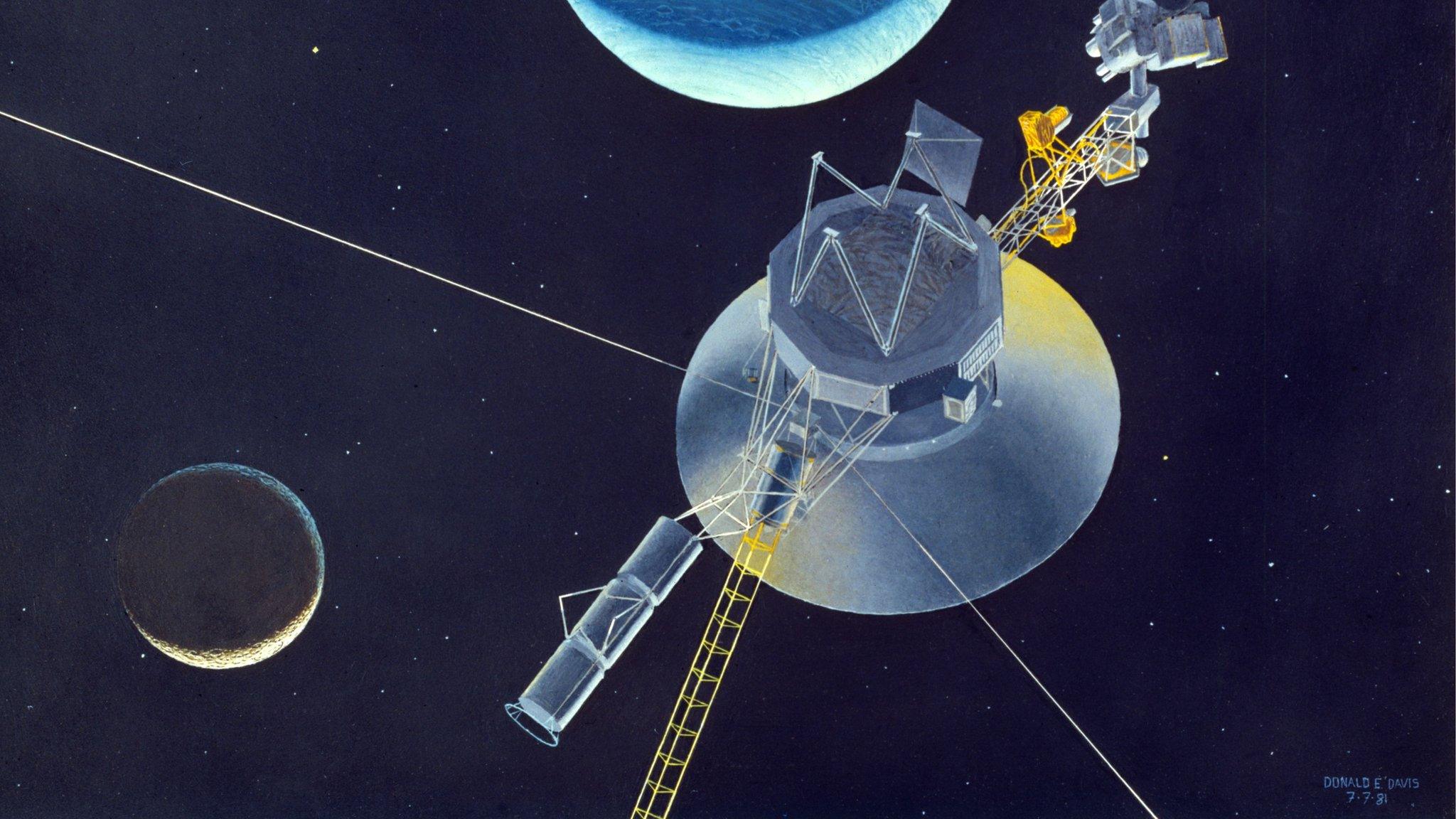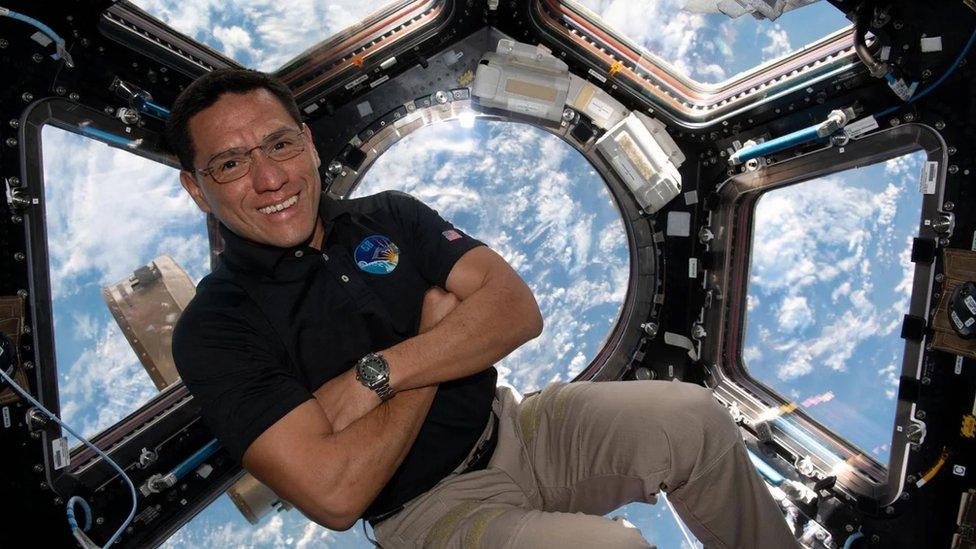Nasa's Voyager 1 spacecraft sending gobbledygook data back to Earth
- Published
- comments

Nasa's Voyager 1 space probe has started sending nonsensical data back to Earth after making a journey of billions of miles and travelling for nearly 50 years in space.
First launched in 1977, the spacecraft was originally on a five year mission to fly past Jupiter and Saturn but has continued to venture further into space for the past 46 years, becoming the first human-made object to leave the solar system.
As of 2023 signals from Voyager 1 typically take more than 22 hours to reach Earth, but Nasa says the probe, which is currently 15 billion miles away from our planet, has suffered a communications glitch.
Ricky explains why Voyager-1 is such a big deal
Voyager 1 has three onboard computers, they include flight data that collects information from the spacecraft's scientific instruments and engineering data, which is a little bit like a coded health bar, showing how Voyager 1 is doing.
On Earth, Nasa receives the data in binary code, a type of coding that uses zeroes and ones to represent letters, numbers, and symbols. It is called binary code because it's made of only two symbols.
But now the probe is repeating itself, sending the same bit of code over and over again, leading scientists to suspect it is broken.
Nasa's Jet Propulsion Laboratory - which manages many of the space agency's robotic missions said on social media that "The NASA Voyager team is investigating an issue with Voyager 1's Flight Data System. The spacecraft is receiving and executing commands sent from Earth but not returning useable data".
Voyager 1 is currently the farthest spacecraft from Earth at about 15 billion miles (24 billion kilometres) away from Earth, while its twin Voyager 2 has travelled more than 12 billion miles (20 billion kilometres) from our planet. Both spacecraft have a gold record on board which contains samples of music, photographs and human speech recorded in 1977. When both craft eventually power down they will continue to carry the message from Earth far across the universe.
The only problem? Voyager-1 will not come close to a star for another 40,000 years, even though it's moving at about 100,000 miles an hour.

A gold disc is onboard the spacecraft demonstrating the sounds, images and diversity of life on Earth as recorded in the 1970s
Last year Nasa announced it was powering down some of Voyager 1 and its sister craft Voyager 2's systems, this means they can both operate for as long as possible until their plutonium power source runs out.
It's expected the probes will both keep working until 2030, at which point their transmitters and instruments will die and the craft will be left to shut down and simply float through space.
The spacecraft are the only human-made objects to operate beyond the heliosphere, the Sun's bubble of magnetic fields and particles that extends well beyond the orbit of Pluto.
- Published12 September 2013

- Published24 June 2022

- Published4 November 2020

- Published27 September 2023

